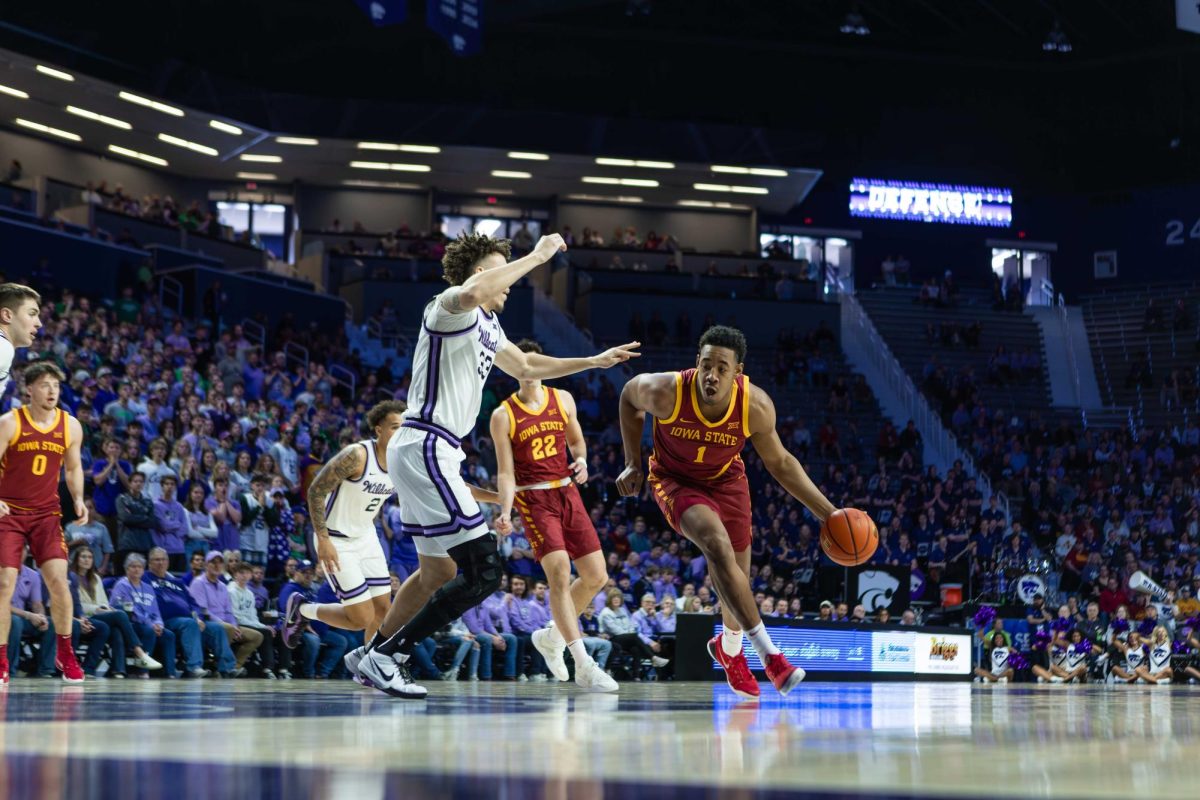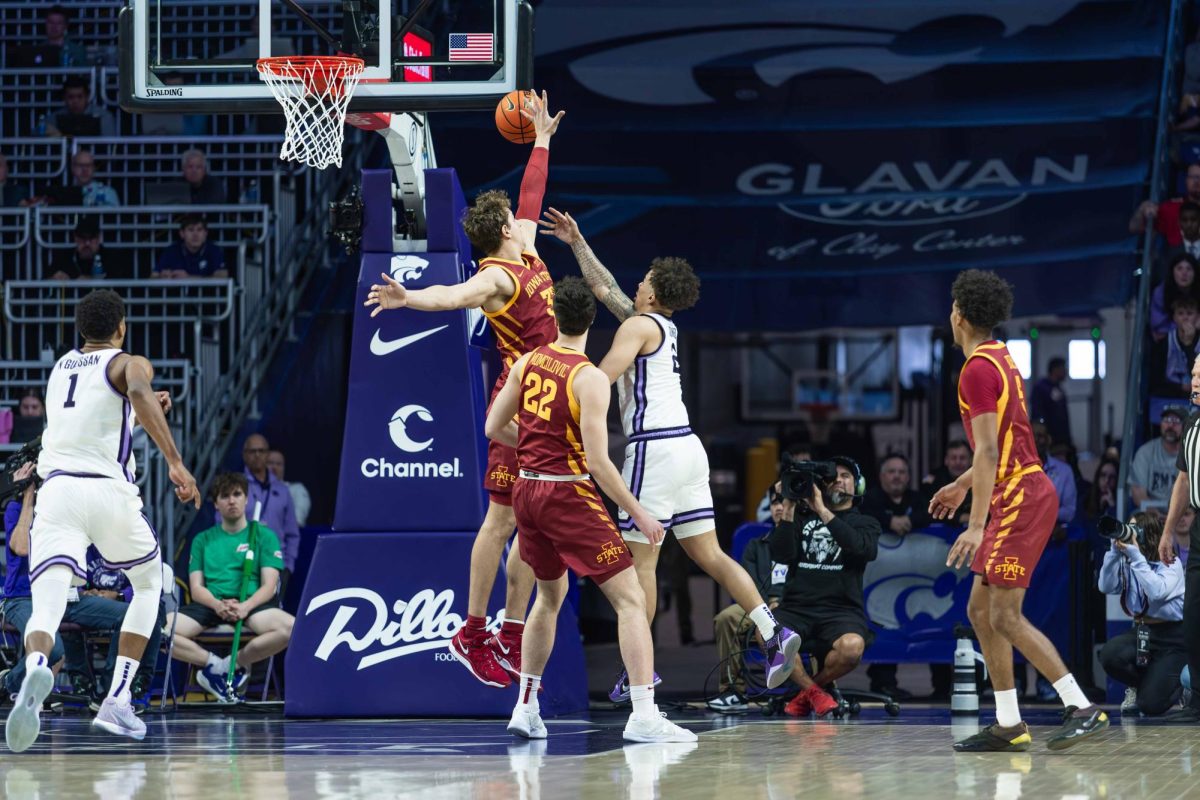Researcher delves into reasons for spill
July 26, 2010
During the past four months, news agencies across the globe have been covering the BP oil spill. The oil leak was finally plugged by a tight-fitted cap July 15. However, the cap is only a temporary fix.
Bob Steffes, PCC research engineer at Iowa State, has followed the spill from the beginning. Steffes graduated from Colorado State University with a bachelor’s degree in mechanical engineering.
After college, Steffes spent 17 years at Dowell Schlumberger as an “oil patch” engineer. During his stint as an oil patch engineer, Steffes worked on many oil rigs around the world.
When he first began at the company, Steffes worked on tasks such as fixing piping connections and pumping cement into the pipes. As time went by, the company entrusted Steffes with more complicated projects.
“Later in years, I was considered a technical engineer,” Steffes said. “When I got to the Middle East, I was the division technical engineer that would be living in Dubai or Abu Dhabi and covering several countries around there.”
From his experience at Dowel Schlumberger, Steffes knows the workings of an oil rig, and knows how catastrophes like the British Petroleum oil spill can happen.
The Deepwater Horizon, the oil rig where the blowout occurred, had many problems prior to the blowout, Steffes explained.
“I think in [the Deepwater Horizon] case, from what we hear, there were a lot of corners cut short,” Steffes said. “First of all, I understand that the rig was 45 days or so behind schedule. It’s costing [BP] about $500,000 a day, so they were obviously pushing to get off this well.”
The Deepwater Horizon also experienced loss circulation. Loss circulation occurs when mud, which is used to offset the pressure of the oil coming up the well, is lost into the earth instead of coming back up the pipe. Loss circulation has the potential to eventually cause a blowout, which happened on the Deepwater Horizon.
Blowouts occur when pressurized natural gas and oil flow up the drill pipe to the surface and then ignite. Since the Deepwater Horizon was already behind schedule, BP pushed the crew to seal off the well more quickly than usual.
“When [the Deepwater Horizon crew] finished their last casing, they assumed that the cement would be in the right place to isolate the gap between the two casings,” Steffes said. “It’s a calculated volume and, assuming that they don’t have loss circulation, it would fill the volume, but apparently with loss circulation, they didn’t have enough cement, so the joint that should have been cemented shut was not cemented shut.”
The cement that was supposed to plug the well instead flowed into the earth. BP should have used centralizers, which are used to make a strong, 360-degree cement seal to make sure the seal was strong enough to hold.
By doing a cement bond log test, BP could have found out the cement was not where it was supposed to be.
“[A bond log] is a test that tells them if they have cement behind the pipe, outside of the pipe, if it’s really there or it’s not there, and they did not run the bond log test,” Steffes said.
Another fatal move was when they were about to move the oil rig off the well. Instead of having heavy mud offset the pressure of the up-flowing oil, the crew replaced it with sea water.
Combining all of the risks taken, the Deepwater Horizon was only waiting to explode.
“The bottom line is that the cementing job failed on the bottom, the gas came through between pipes and worked itself up to the top, and from what I understand, some casing seal broke at the top and allowed this gas to get into the main well stream, and then it came up into the drilling rig,” Steffes said.
“They tried to shut the [blowout preventer] off, which should have been their last safety valve, but that did not work and the gas got into the mud room, and with big engines running [in the room], there was a big explosion.”
BOPs are located at the top of the well head at the sea floor. They are specially designed valves that are supposed to, if working correctly, prevent blowouts.
They are typically independent from everything else on the rig, and usually operated by highly pressurized tanks. If there is a sudden change of pressure, the pressure from the tanks will go down and cause the it to close.
“[The tanks] operate through a hydraulic system, and there may have been a leak in a hydraulic system,” Steffes said.
If oil leaked out of the hydraulics system, there may not have been enough force to close the BOP. Equally likely, the batteries powering the controls could have failed.
“Some of this is electronic; there is a panic button powered by batteries,” Steffes said. “The batteries there should always be alive, so if you hit the panic button, the batteries should send a signal someplace to close the [BOP].”
However, this did not close the BOP, so April 20 the Deepwater Horizon had a blowout and an explosion. BP reported a leak of 1,000 barrels of oil per day four days later. BP announced that a cap was placed over the largest of the three leaks May 7.
“One of the first [efforts to stop the leak] was with a large funnel cap and that didn’t work because the gas and the sea water created an icy-like slush, hydrate, and plugged up the funnel completely,” Steffes said.
After the first cap didn’t work, BP began doing a process called “top kill.”
“[A top kill is] pumping drilling mud into the well head, or the BOP, but, keep in mind, as they are pumping this fluid into the well head, it has two ways to go,” Steffes said.”One way is down the well to cause the blowout to stop and reverse, but the other possibility is for the fluid to fly up and out of the system, which is already broken.”
BP pumped mud into the well for 10 hours. The force of mother nature was too strong and the mud came flying back out of the well. The top kill plan was ruined.
The company then decided to try a “top hat.” Before putting on a top hat, BP had to remove the damage riser pipe, which was still connected but laying on the sea floor.
“Imagine you’re 5,000 feet deep in the water with robots, trying to cut off a pipe,” Steffes said. “It was a huge operation.”
The pipe was partially cut, but the saw blade snagged before the cut was finished. A set of sheers had to be used to cut off the pipe.
However, the cut made by the saw and the sheers was very uneven, and the top hat was unable to sit snugly on the well. The seal between the well and the top hat was too large, so some of the oil escaped into the ocean instead of going up to a ship.
“[The top hat] had been running for quite awhile, but they were getting only about one-third of the oil coming out of the well,” Steffes said.
BP then decided to build two pipes that are currently pumping oil to ships. Robots removed the nonfunctional cap July 11, and replaced it with a more tightly-fitted cap July 15. As of today, the cap is stopping the oil from escaping, but the cap is only a temporary solution.
Two relief wells are currently being drilled near the leaking well. The two will be connected to the bottom. BP hopes the two relief wells will permanently stop the leak.
“The total distance is 18 or 19,000 feet they have to drill,” Steffes said. “When they go into the directional drilling mode, it means you are turning corners. How do you do that with a steel pipe and how do you know where you’re going? There’s a lot of technology involved there, so these things take time.”
The loss of time, money and lives due to this oil spill could have been prevented. Steffes does not blame the spill on one particular person, but a multitude of different people.
“Our federal inspectors were not on the ball, BP inspectors were not on the ball, some people on the rig, depending on the chain of command, took risks and made mistakes,” Steffes said.
Steffes believes the Bureau of Ocean Energy Management, Regulation and Enforcement, formerly named the Mineral Management Services, should have noticed and acted on the safety violations on the Deepwater Horizon.
“Was our federal agency watching the way they were supposed to?” Steffes asked. “I would question that.”
In order to save money, BP pushed the crew on the Deepwater Horizon to finish the well at a faster rate than they were used to. Hurdling safety regulations, BP took many risks in finishing the well. The risks did not pay off; they caused the worst oil spill in U.S. history.
“We have many drilling rigs working in the same condition; some are in deeper water, some are deeper wells and they didn’t have the problem,” Steffes said. “This one did.”






